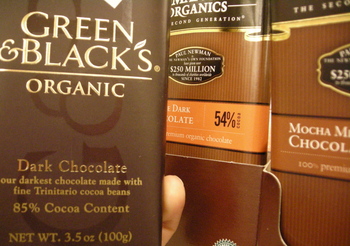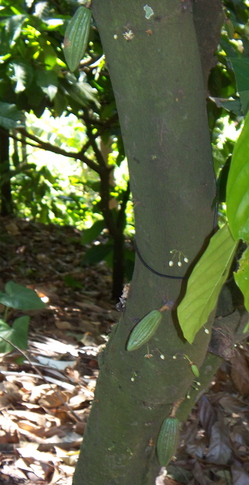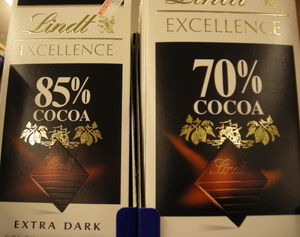What do chocolate percentage labels really mean?

85%? 75%? 54%? What is the difference?
Corinna Borden | Contributor
I was wrong.
I have recently learned - thanks to two chocolate classes courtesy of Duff at Zingermans Deli - that unctuous, toe-curling, spine tingling, mouth happy chocolate sparkles regardless of chocolate percentage or the presence of milk solids. I had always thought a higher percentage denoted a more intense chocolate flavor, which is not the case. In fact, the percentage listed on a bar of chocolate has little to do with the quality of the bar.
In order to explain what I mean, I will give a macro description of how a chocolate bar is made. Cacao trees are a short tropical tree. The small football shaped seedpods are harvested by a machete (or a lucky monkey). The delicate pulp is removed from the seeds. The seeds are covered and left to ferment. Fermentation kills the viability of the seeds and starts flavor development. The final step on the farm is the drying of the beans to prevent mold from developing during transportation. The choice to sun dry or to dry in an oven affects the final flavor of the chocolate as well.

Seedpods grow directly from the trunk of the Cacao tree.
Corinna Borden | Contributor
Every step of this long and extensive process (both on the farm and in the factory) is an opportunity for flavor development or flavor degration. Producers who oversee all steps of this process often have a more complex and nuanced final product.
Here is the key bit of information that blew me away - the percentage listed on the bars refers to the total amount of cacao regardless of the butter to solid ratio. The cacao nib contains about 50/50 cacao butter to cacao mass. Cacao mass (aka cocoa powder) holds the flavor and the color. Cacao butter is tasteless and melts at body temperature (i.e. the cosmetic industry loves cacao butter - making it financially attractive for a chocolatier to sell off the cacao butter and replace it with a cheaper fat).
You could taste three bars that all list advertise themselves as being 80 percent dark. But the 80 percent figure is misleading because each bar could have a different ratio of mass to butter, changing the flavor intensity of the bar. You may have thought you were purchasing the bite of the cacao solids and end up with a mild cacao flavor - melting beautifully because it has a high amount of cacao fat.

We have no idea which one of these has more cacao mass - we just know that the total amount of cacao mass and butter equals the percentage listed on the package.
Corinna Borden | Contributor
Fortunately, you won't know if the chocolate you choose makes you sing until you taste it - and if it is not for you, you can share with a friend, just in time for Valentines Day.


Comments
Rosie
Tue, Feb 9, 2010 : 3:57 p.m.
Corinna, Where would one find these chocolatiers?
Corinna Borden
Mon, Feb 8, 2010 : 6:53 p.m.
Here is a partial list of some chocolatiers to choose from as you explore the world of the cacao: Valrhona, Amedei, Michel Cluizel, Patric, Claudio Corallo, Pralus, and Askinose. Enjoy!